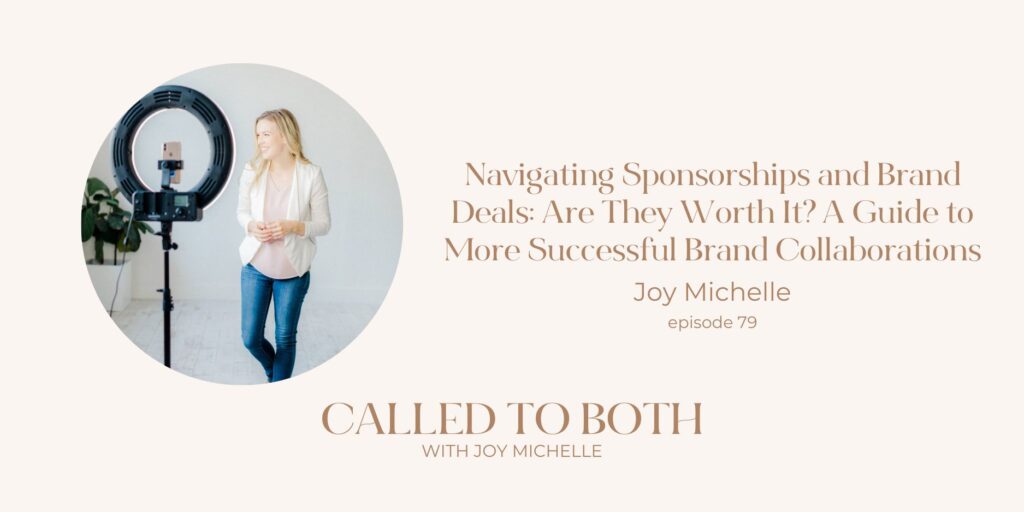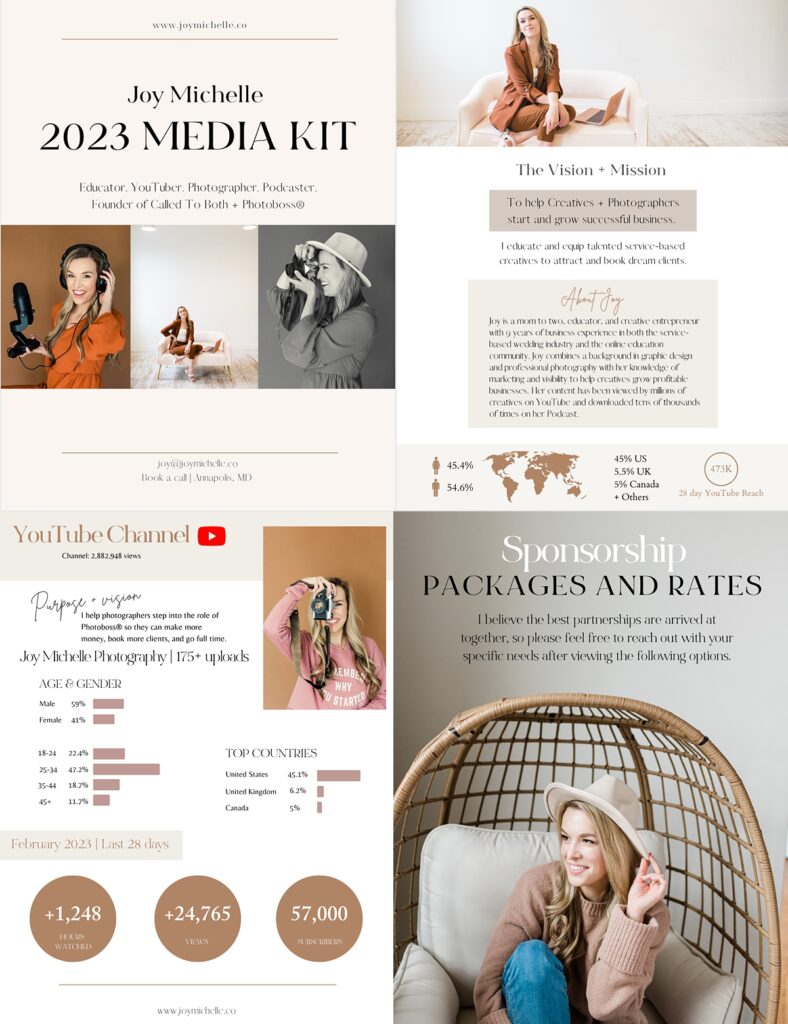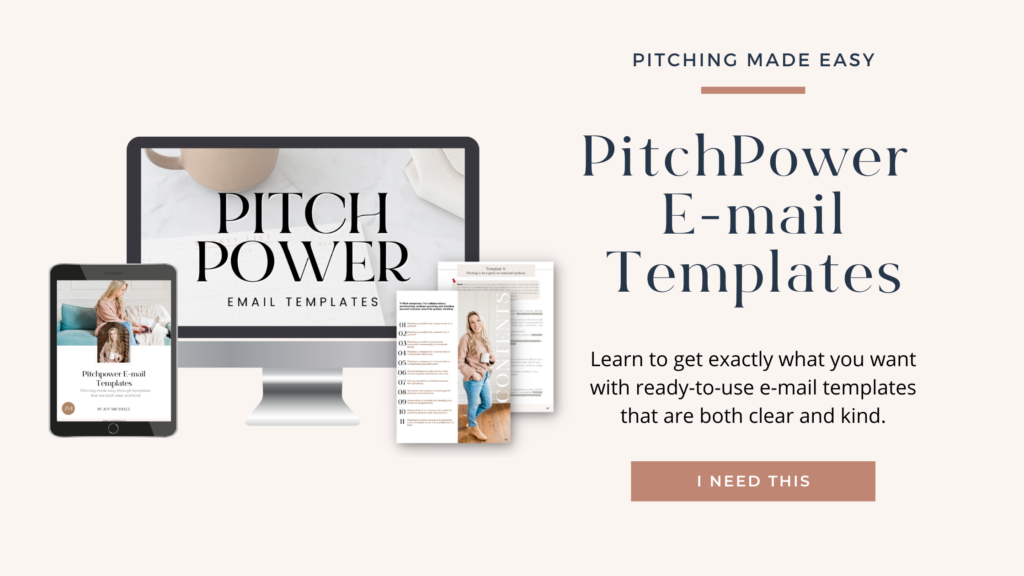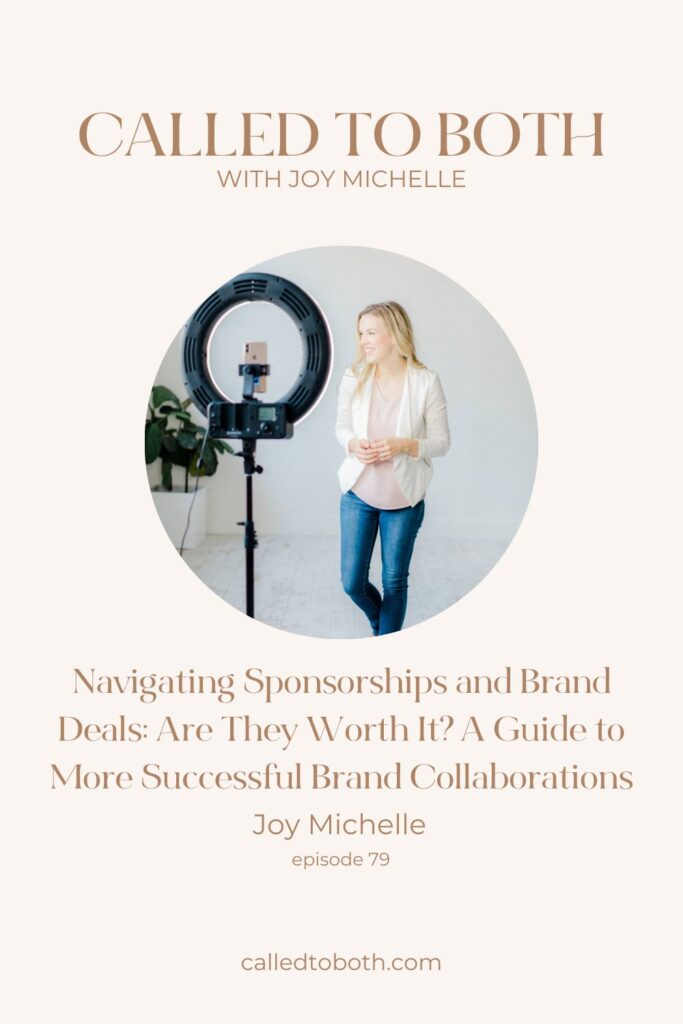
To wrap up our series on diversified revenue streams, we’re diving into the topic of getting sponsors and brand deals. In this episode, I’m sharing some insider tips, insights, and cautions for you so that you can make more brand deals, maximize each opportunity, and understand the steps to securing these kinds of collaborations.
Listen to part one, part two, part three, part four, and part 5 of this series.
Called to Both is brought to you by Joy Michelle, mom of two and multi-passionate entrepreneur who’s on a mission to help others find balance between the worlds of motherhood and business. Called to Both is the podcast for women who have big business ambitions and also want to be intentional and present moms. At Called to Both, we truly don’t believe you have to choose between these two worlds tugging at your heart You can be Called to Both.
You can stay up to date with the Called to Both Podcast by subscribing on Apple Podcast App, Spotify, or your favorite podcast player!
Today’s episode is brought to you by my Pitchpower email template pack, you’ll find 10 email pitches to get you the visibility and collaborations you want in your biz. This email template pack includes emails for reaching out cold and a template for turning free product or affiliate collaboration offers into paid deals.
Sponsorships and Brand Deals for Business Influencers
While brand deals and sponsorships for influencers are known in the lifestyle and fashion industry, “business influencers” (as I like to call us) are making money with brand deals too.
A brand deal, also known as a brand partnership or brand collaboration, is a business arrangement in which a company or brand collaborates with an individual or another company to promote their products, services, or brand in exchange for compensation. Brand deals can take various forms, such as sponsored content, endorsements, product placements, sponsored social media posts, and more.
Getting Started with Brand Deals
I’m often asked about getting started, how to price brand deals, how to negotiate, and if I pitch myself for deals. If you’re thinking about exploring brand deals, let’s talk about where to start and what you need to consider!
Create a Media Kit
A great place to start for those of you who want to secure brand deals is with your media kit. What should your media kit have?
- Your company mission and vision
- Your platform stats like audience demographics and reach
- Your rates for sponsorship
- Past sponsorships and case studies (optional)
My advice is to start simple and build with what you have and continue to add. My media kit started out pretty short and simple, but as I got deals I added in logos of brands I have worked with and examples of campaigns. Canva has lots of awesome templates for media kits and I used one of theirs to create mine.

Use Contracts
The next thing to consider when starting with brand deals is to establish and use a contract!
When I first got started, I actually didn’t use a contract at first and I actually didn’t get paid for a video I made on YouTube until a few years later when the same company came back asking to collaborate again and I gently reminded them I never got paid. I sent the invoice and thankfully they paid it—we did not work together again.
A lot of that could have been avoided if I used a contract or insisted on getting paid upfront—which is what I do for 90% of my brand deals now. You can find contracts about collaborations online, and put together specific terms in yours like content usage rights.
(Please note: I’m not a lawyer, so I’m not giving you legal advice.You should run your final contracts by a lawyer.)
Build Your Pitching Knowledge So You Can Pitch Yourself
The next thing to consider is educating yourself on pitching. While you can always hope for a brand to pitch you (which is possible), you’ll secure more deals faster when you learn how to properly pitch yourself. I’ve secured brand deals both ways.
If you’re curious on how to word your pitch emails, I have pitching templates on this exact topic. In my Pitchpower email template pack, you’ll find 10 email pitches to get you the visibility and collaborations you want in your biz.
This email template pack includes emails for reaching out cold and a template for turning free product or affiliate collaboration offers into paid deals. You’ll find that these templates establish the language you need for pitching, which improves your confidence when going back and forth with brands. Make sure you grab the pitch power templates to start pitching today.
The longer I’ve been in business the more I’ve realized that your ability to pitch is such a valuable skill and directly relates to how your business will grow.

Know What You Should Get Paid
One of the biggest hesitations that I see people experience when they’re getting started with collaborations is the money and financial aspect. How do you charge and will they actually pay that? This is something I am always learning more about and an area I want to get better in.
For myself, it’s been a range of free product and store credit to a few hundred dollars and sclaing to $6,000 brand deals. It’s all about what they are wanting, how you can craft content to serve what they need, and showing your value while making the money you want. From the research I have done, a good way to get that number up is to find a way to work together in more of an on-going capacity instead of 1 off content like 1 reel, or 1 video.
Tips for pricing your brand collaboration rates and getting paid:
- Know Your Value: Assess your influence and value you bring to your audience beyond the numbers. While your follower count, and engagement rate are valuable, think about the level of content you create and what your time is worth. Take the whole project into consideration.
- Research Similar Influencers: Look at other influencers in your niche with a similar audience size and engagement. Check their social media platforms, blogs, or websites to see what they charge for collaborations.
- Scope of Work: Consider the type of content you’ll be creating, the effort required, and the time commitment. The more complex or time-intensive content may warrant a higher fee.
- Usage Rights: Consider whether the brand will have exclusive usage rights to your content or if you can repurpose it on your platforms. Exclusive rights might warrant higher compensation.
- Define Your Rates Ahead of Time: Establish a rate card that outlines different collaboration options and their associated costs. This could include options for sponsored posts, stories, videos, and more.
- Provide Analytics: Having insights into your audience demographics, engagement metrics, and past campaign performance can help you justify your rates.
- Trial and Error: It’s okay to adjust your rates over time as you gain more experience and grow your influence. You also will find out how long these things take you and that alone can have you changing your rates.
- Consider the Future Brand Relationship: If you want to work with this brand again in the future, you can take a lower amount and prove that your audience converts, and then pitch them for something larger down the road. Have the long game in mind.
Understanding that Negotiations Are Expected
The last thing you should know is that there will be negotiations. If you aren’t negotiating, you’re leaving money on the table. The book Never Split the Difference is a good resource if you’re looking to build your negotiation skills.
Some brands might have a set budget, while others may be open to negotiation based on the value you provide. Many times, if you don’t ask, you won’t get it.
Are you interested in getting brand deals?
Be sure to take a look at the PitchPower E-mail template pack, where I share my best pitches for collaborations, getting visibility, and securing brand deals.
If you’re enjoying the content we’re creating on the podcast and want to connect with others who are called to both, make sure you come join us in the Called to Both Facebook Group!
Mentioned in This Episode:
Episode 74: Growing Beyond Services: Building Diverse Revenue Streams
Episode 75: Affiliate Marketing for Content Creators
Episode 76: 3 Ways to Know If Your New Offer Will Sell Before You Create It
Episode 77: How a YouTube Channel Can Help Diversify Your Business Revenue
Episode 78: Stepping into the Digital Product World: Getting Started
Pitch Power Email Template Pack
Connect with Joy:
Instagram: instagram.com/joyymichelle
Youtube: youtube.com/channel/UC-Ou6jRKxcjMrVMxWxLO_fQ
Facebook: facebook.com/joymichellephotography
Coach with Joy: joymichelle.co/coaching
If you decide to use any of the links above and buy through them, I’ll receive a small commission back. All of those affiliate income commissions really add up over time and help generate revenue to help support this podcast.

Looking for the Transcript?